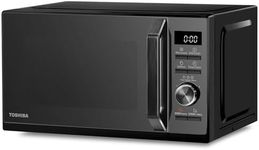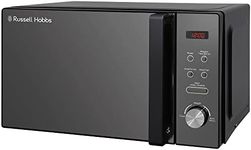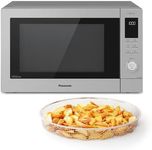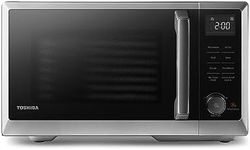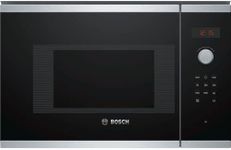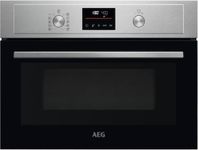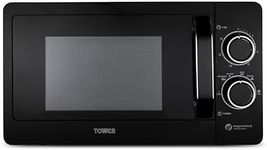Buying Guide for the Best Microwave Oven
Choosing the right microwave oven can significantly enhance your cooking experience, making it faster and more convenient. When selecting a microwave, consider how you plan to use it, the space available in your kitchen, and the features that will best suit your cooking habits. Understanding the key specifications will help you make an informed decision that aligns with your needs.WattageWattage refers to the power of the microwave oven, which affects how quickly and evenly it can cook food. Higher wattage microwaves (around 1000 watts or more) cook food faster and more evenly, making them ideal for those who frequently use their microwave for cooking meals. Mid-range wattage (700-900 watts) is suitable for reheating and basic cooking tasks. Lower wattage microwaves (below 700 watts) are slower and may not cook food as evenly, but they can be sufficient for simple reheating tasks. Consider your cooking habits and choose a wattage that matches your needs.
CapacityCapacity is the size of the microwave's interior, usually measured in cubic feet. It determines how much food you can cook at once. Small microwaves (0.5 to 0.8 cubic feet) are suitable for individuals or small kitchens with limited space. Medium-sized microwaves (0.9 to 1.3 cubic feet) are versatile and can handle most cooking tasks for small families. Large microwaves (1.4 cubic feet and above) are ideal for larger families or those who frequently cook large dishes. Consider the size of your household and the types of dishes you plan to prepare when choosing the capacity.
Turntable vs. FlatbedMicrowaves can have either a turntable or a flatbed design. A turntable rotates the food to ensure even cooking, which is common in most microwaves. Flatbed microwaves use advanced technology to distribute microwaves evenly without the need for rotation, offering more usable space and easier cleaning. If you often cook large or irregularly shaped dishes, a flatbed design might be more suitable. For standard cooking and reheating, a turntable design is typically sufficient.
Pre-programmed SettingsPre-programmed settings are preset cooking modes for specific foods like popcorn, pizza, or vegetables. These settings automatically adjust the cooking time and power level, making it easier to achieve optimal results without guesswork. If you frequently cook specific types of food, look for a microwave with relevant pre-programmed settings. For those who prefer manual control, these settings might be less important.
Inverter TechnologyInverter technology allows the microwave to deliver a consistent power level, which helps in cooking food more evenly and preserving its texture and flavor. Traditional microwaves cycle between full power and no power, which can lead to uneven cooking. If you often cook delicate foods or want to ensure even heating, a microwave with inverter technology might be beneficial. For basic reheating and cooking, a standard microwave without this feature may suffice.
Size and DesignThe size and design of the microwave should fit well with your kitchen's layout and aesthetic. Consider the available counter space or whether you need an over-the-range model. Compact models are great for small kitchens, while larger models may offer more features and capacity. Additionally, the design should complement your kitchen decor. Think about where you will place the microwave and how it will fit with your other appliances.




